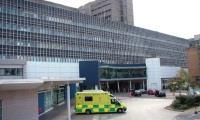The boards of Liverpool’s two university teaching hospital trusts are to consider a joint report from their senior clinicians that recommends merging the organisations, HSJ has been told.
- Senior clinicians at Royal Liverpool and Broadgreen University Hospitals Trust and Aintree University Hospital FT recommend merger of the organisations
- Report to be considered by Aintree board today, Royal Liverpool board next month
- Boards will need to decide whether clinicians have made clearly evidenced case for patient benefits
- Royal Liverpool emphasises merger is just one option – changes would need significant legal and financial due diligence
The clinical options analysis is expected to go to the board of Aintree University Hospital Foundation Trust today, and to the board of the Royal Liverpool and Broadgreen University Hospitals Trust towards the end of next month.
It is the product of a joint clinical advisory group chaired by the medical directors of the two trusts. HSJ understands that it pulls together work that has been done by clinical teams across the full range of specialties provided by Royal Liverpool and Aintree to evaluate the patient benefits of working in collaboration.

Royal Liverpool chief executive Aidan Kehoe told HSJ his board would need to decide whether the report made a clearly evidenced case for patient benefits. If so, there would need to be further detailed work to analyse the full range of possible organisational changes that could enable closer working.
However, Aintree acting chief executive Steve Warburton said the clinical advisory group’s report had “unequivocally” recommended merger as the best option.
Mr Warburton told HSJ: “Liverpool has a very fragmented provider landscape. Currently, lots of effort goes into working around that by the clinicians of both trusts, but there’s a view that if Aintree and the Royal could merge to create a single academic teaching hospital that would have huge benefits for the wider health economy.”
He said there had been past attempts to look at the possibility of merging the two trusts, but the last time it was seriously considered, in 2006, it had felt like a “managerial, top-down” exercise, and had not gained the support of Aintree’s clinicians.
Mr Warburton continued: “What I think’s happened over the past few years is there’s been a growing realisation at a clinical level that services aren’t working as optimally as they could, and if we are going to solve some of those problems then we have to start looking at some of the current configurations.”
In some cases, he said, this was about bringing together services that would be better co-located, giving the example of pancreatic surgery, currently performed on the Royal Liverpool site, and liver surgery, which is at Aintree. In other cases it was about bringing together services currently performed by both trusts to drive up quality through critical mass, and to build bigger teams that can more easily staff rotas and address the challenge of seven day services.
The trusts already have some experience of using joint ventures to bring services together, including vascular services and pathology.
However, Mr Warburton said the view of Aintree clinicians was that joint working between the trusts across a much wider range of services would be impractical to organise through joint ventures.
He said: “When you start to look at our service strategies, the view of the senior consultants from both trusts is that it’s not feasible to create 29 [joint ventures] across your 29 service lines. This has led the Aintree board to the view that there has to be a merger of Aintree and the Royal in order to create a critical mass of sustainable clinical services going forward.”
Mr Kehoe emphasised that the work was still at an early stage, that merger was just one of the options being looked at, and that any options the trusts were considering would need discussion with regulators.
He said that when his trust’s board considers the report it would need to decide “what [it] tells us about patient benefit”.
He continued: “If there is a strong, clearly evidenced case that we can deliver better services for patients and better outcomes, then we’ve got to then move to a stage that would be looking in much more detail [at] how we organise ourselves, what are those organisational forms [that could potentially be used]?”
There would need to be a proper business case developed to consider the various options, and that would include “all potential options” from joint ventures up to merger. Any of these options would require significant legal and financial due diligence.
Mr Kehoe added: “What I think is good is really the nature of the work that’s happening. The teams are working really well together. I think they want to do their best for the city. Everybody has embraced this piece of work. I’m not saying that as you move on and get down to detailed discussions about what goes where that those won’t be difficult, but it’s really positive at this stage.”
Fiona Lemmens, clinical director of Liverpool Clinical Commissioning Group’s Healthy Liverpool Hospital programme, said: “We would support proposals for structural change as long as they can demonstrate clear benefits for patients and alignment with our vision for single service, city-wide delivery around a centralised university hospital teaching campus on the site of the new Royal Liverpool University Hospital, around which other specialised and hospital services would deliver as a collaborative network.
“The city’s senior clinical leaders have shaped this vision for our hospital system and strongly support moves for structural change, as an enabler for this transformation.”



























4 Readers' comments